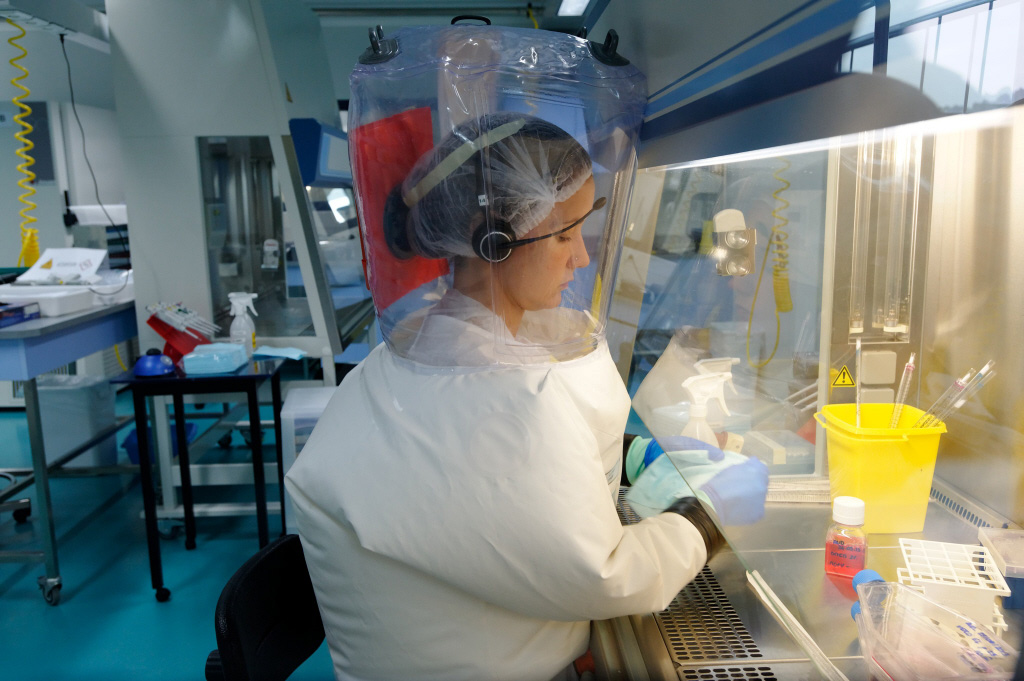The CIRI is at the forefront in fighting the Ebola virus
The Centre International de Recherche en Infectiologie (International centre for infectiology research - CIRI) brings together almost 300 researchers to advance the understanding of infectious diseases so they can be better controlled.
Research at CIRI aims to meet the challenges of public healthcare in the future, as illustrated by these important results published in 2013-2014:
The CIRI is at the forefront in fighting the Ebola virus
The "Molecular bases of viral pathogenicity" team is building up internationally acknowledged expertise in the study of highly pathogenic viruses: Ebola, Marburg (same family as the Ebola virus), Nipah and the Crimean–Congo haemorrhagic fever. Its work recently led to the identification of one of the mechanisms through which the Marburg virus disturbs the immune response, which explains its very high level of pathogenicity (Page et al., Cell Reports, 2014). The current Ebola epidemic in West Africa underlines the importance of this fundamental research: better understanding of the biology of the virus opens up new avenues for treating it.
Identification of a small RNA molecule that reduces the virulence of Staphylococcus aureus
Staphylococcus aureus is responsible for around 30% of bacterial infections acquired in community healthcare facilities and in hospitals, and constitutes a major public health problem throughout the world. Analysis of the genome of this bacterium (and its RNA expression, the transcriptome) reveals the presence of a large number of very small RNA molecules which do not encode proteins, and whose function is basically unknown. The "Pathogenesis of staphylococcal infections" team has just shown for the first time that one of these small RNA molecules, called Rsa, reduces the expression by several factors of virulence and reduces the acute virulence of the bacterium in animals, while helping induce chronic infection (Romilly et al., PloS Pathog, 2014). This RNA is expressed in humans (Song et al., PLoS One, 2012), including in its natural site namely the nasal fossa (S. aureus is present in the nose of 30% of humans). This research constitutes a major advance in understanding the mechanisms that make this bacterium both widespread in humans and that make it so dangerous.
Autophagia, a cell mechanism at the heart of viral infections
Autophagia, a mechanism whereby the cell eliminates some of its own constituents, also plays an essential role in the fight against intracellular pathogens, viruses and bacteria. Many of these pathogens have, however, developed mechanisms to avoid autophagous destruction or have found to way to turn this mechanism to its own advantage. The "Autophagia, Infections and Immunity" team identified the first cell receptor linking pathogens able to induce autophagia directly (Joubert et al., Cell Host & Microbe, 2009). They then showed that viruses as different as measles, human immunodeficiency virus (HIV-1) and hepatitis C (HCV) all target the same cell protein of autophagia to take advantage of its function (Grégoire et al., PloS Pathog, 2011). Very recently, this team discovered no fewer than three successive, but independent molecular mechanisms via which the measles virus causes autophagia during infection (Richetta et al., PloS Pathog, 2013). All of these discoveries demonstrate the importance of understanding the intricate relationships between infectious agents and autophagia, which can either destroy the pathogen or help it to spread.



 en
en fr
fr
 es
es

